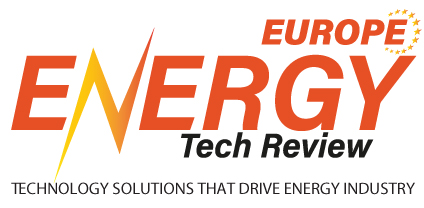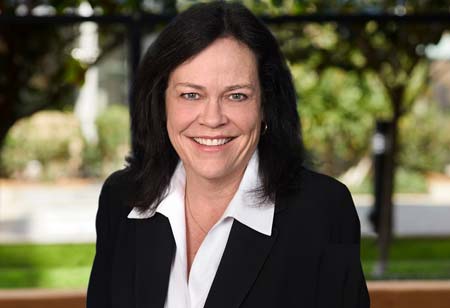Maureen McDonald is a Director of Energy Services at Southland Industries in Garden Grove, California. She is a LEED Accredited Professional with over 20 years of experience in the construction industry. Maureen has worked on various projects, including K-12 schools, hospitals, and commercial buildings. She has expertise in energy modeling, commissioning, and retro-commissioning. Maureen has also been involved in the development of energy-efficient designs for HVAC systems and lighting controls. She has a Bachelor’s degree in Mechanical Engineering from the University of California, Los Angeles (UCLA) and an MBA from Pepperdine University. Maureen is passionate about sustainability and has been involved in several green building projects throughout her career.
In an interview with Energy Tech Review, McDonald discusses her roles and responsibilities in the Southland industry and delves into her recent projects, sharing Southland Industry’s strategies and how they help it stand out among market contemporaries.
What are your roles and responsibilities at Southland Industry?
As the Director of Energy Services at Southland Industries, I am responsible for overseeing the energy division’s efforts in providing innovative energy solutions to government agencies at the state, local, and federal levels. Our focus is on providing cost-efficient, resilient, and sustainable energy options that meet the evolving needs of these entities .
I hold a Master’s degree in Metallurgical Engineering, Business Administration, and Environment Policy and Management. Before joining Southland Industries, I owned a solar company that provided me with expertise and insights into the solar market .
My experience in the construction industry spans over 20 years. I have worked on various projects, including K-12 schools, hospitals, and commercial buildings. My expertise lies in energy modeling, commissioning, and retro-commissioning. I have also been involved in the development of energy-efficient designs for HVAC systems and lighting controls .
I am passionate about sustainability and have been involved in several green building projects throughout my career
What according to you are some of the prevalent challenges in the energy market?
One of the predominant challenges is when we help clients analyze how they spend these funds. They should be holistic rather than narrow-minded. For instance, they should be ready to spend it on Plexiglas instead of approaching it as a COVID-relief fund.
We aim to broaden their mindset and make them look at what they wish to accomplish. Then we take their vision forward to see whether these resources and funding from the Federal Government will facilitate them to achieve it or are there gaps not bridged by these allowances. Then we work on finding a way to cover and fill those gaps if any.
“Nowadays, people are more aware of the relationship between energy and the environment, which allows us to consider the broad concept of resiliency, sustainability, and energy efficiency and how they are interconnected.”
Often, it is just a matter of a change of perception or capital contribution, and sometimes it is finding incentives or utility. The method in financial engineering should seem parallel to the technical solutions and challenges faced by clients and look at the financial aspect of it that weaves together multiple funding sources to provide the best financial solutions.
Please elaborate on the technological trends that you are witnessing in the energy space.
Incentives for battery backup offered by the Federal Government are relevant funding sources. Implementing battery back-ups in micro grids can improve cost-efficiency and help companies keep up with technological advancements, leading to smoother operations in the market. However, incentives can be irregular, which can be a challenge for companies.
California has done an excellent job in the solar industry by catering to the need for incentives to be sustainable. This enables technology companies to invest in affordable rates on technology advancements. California’s incentive program has reduced participation time, boosting tech-driven firms’ confidence to invest in new facilities and technologies. The program mentions of the significant price drop that is helpful. Organizations plan and invest in technology development despite being aware of the decreasing incentives, as they employ their experience and deep knowledge to leverage and optimize the usage of incentives, which helps them enhance business by adopting recent technologies.
Could you please delve into strategies Southland Industry employs?
We developed an energy program in Pomona, California several years ago, and it’s wonderful to see that it’s still being used. The school district has taken a wise decision by looking beyond the direct use of COVID funds and integrating strategies that include cost-efficient energy, improved air quality, and comfort level. This has subsequently enhanced the learning environment in the classroom and promoted electrification.
Our aim is to participate in the state initiative for electrification that will subsequently reduce greenhouse gas emissions. We equipped them with a comfortable and improved learning environment for strengthening their future by supporting them in their venture. We aligned with them to tackle situations and arrive at solutions to fulfill this vision by connecting the pieces and parts.
Since the climate is humid these days, people use air conditioners even during the daytime, which makes it imperative to increase and maintain a certain level of comfort for children by providing them an adequate learning space. By doing so, we can ensure that they have a conducive environment for learning.
How do you envision the future of the energy industry?
Nowadays, people are more aware of the relationship between energy and the environment, which allows us to consider the broad concept of resiliency, sustainability, and energy efficiency and how they are interconnected. It is heartening to see that most of us understand the need for resiliency and sustainability in the industry, which can have a positive impact on both the market place and the environment. Companies and clients can catalyze and move forward in these areas with enough momentum on both political and legislative fronts.
What is your advice for peers and other professionals in the field?
Advancements happen when engineers to get excited over technical aspects. But while acting on it, you need a proper understanding of the framework and incentives capable of increasing the sustainability and impact of said advancements.












